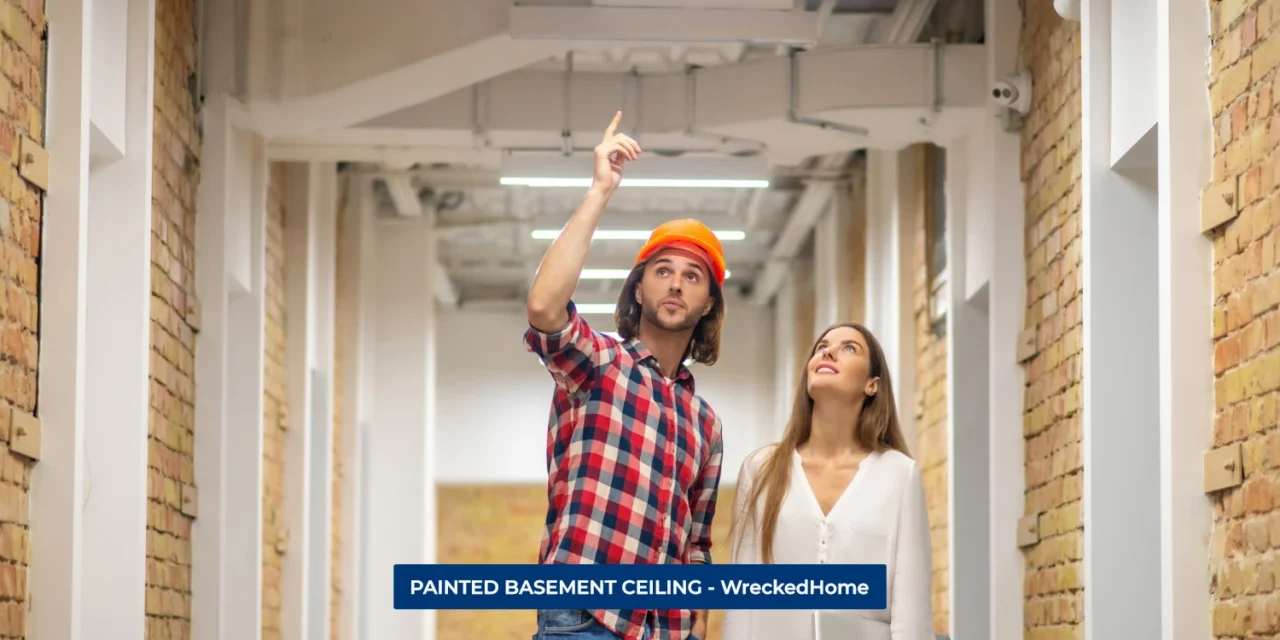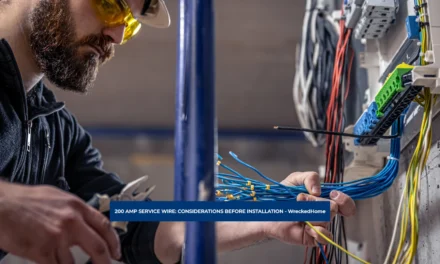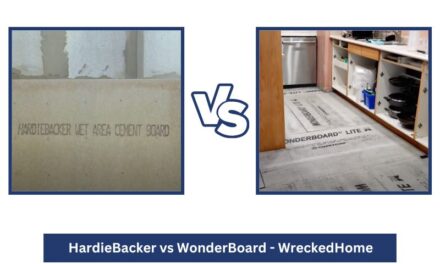A painted basement ceiling needs unique ideas for painting. It should look aesthetic and appealing. You will find many great ideas on the Internet, but keep in mind to pick what you actually need. Two terms confuse many people which are the Painted basement ceiling and Painted exposed basement ceiling.
Though both terms look same, they aren’t. When your ceiling has drywall installed over its joints and rafters, it is known as a painted basement ceiling. In this case, you just need to paint the drywall to create a smooth, seamless surface.
On the other hand, when there is no drywall installation and joists, and uncovered rafters, it is known as a painted exposed basement ceiling. In such cases, a user paints the wood to create rustic or industrial look.
The method and process are quite similar for the painted basement ceiling. Just remember that painted exposed basement ceiling is more challenging as it needs more work from your side. But, it is preferred because the modern designs pick the exposed basement ceiling over simple one. Let’s read the process of a painted basement ceiling:
- Is It Possible To Paint an Unfinished Basement Ceiling?
- Benefits Of a Painted Basement Ceiling
- What Is the Best Way to do a Painted Basement Ceiling?
- How to Paint an Unfinished Painted Basement Ceiling
- Is Priming Necessary For a Basement Ceiling Before Painting?
- Inspect and Secure Venting and Pipes
- Remove Insulation Ceiling
- Bundle & Secure Wiring
- Trim Ceiling Nails
- Fill Gaps By Using Foam Insulation
- Clean Your Ceiling
- Tape Off Your Places Where You Don't Want to Paint
- Protect Floors, Surrounding, and Yourself
- Apply Primer
- Spray Basement Ceiling
- Conclusion – Painted Basement Ceiling
Is It Possible To Paint an Unfinished Basement Ceiling?
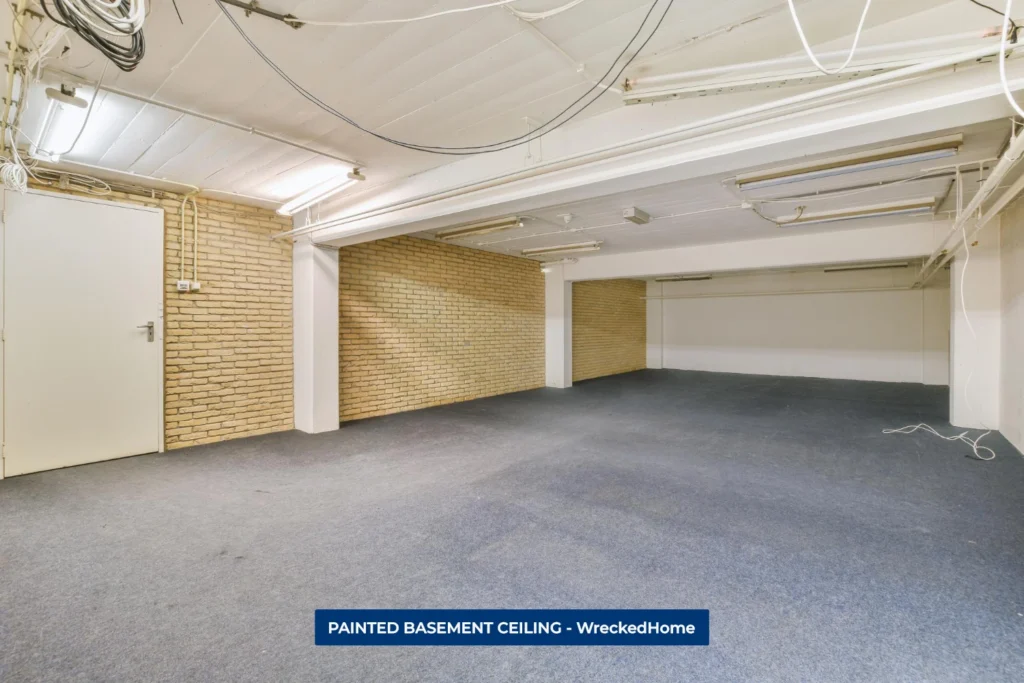
Yes, you can paint the unfinished basement ceiling. Most people put drywall and ceilings to create a mirror look in homes. Painting an unfinished basement ceiling creates a great impact on the space. You can also cover pipes and duct-work in your basement with paint. Most importantly, you have to cover copper pipes, PVC pipes, and soft pipes, as well as ducts and all-metal duct-work. Remember that paint is chosen according to the surfaces you want to cover. So, ensure to prime the surface so that it sticks to surface.
Benefits Of a Painted Basement Ceiling
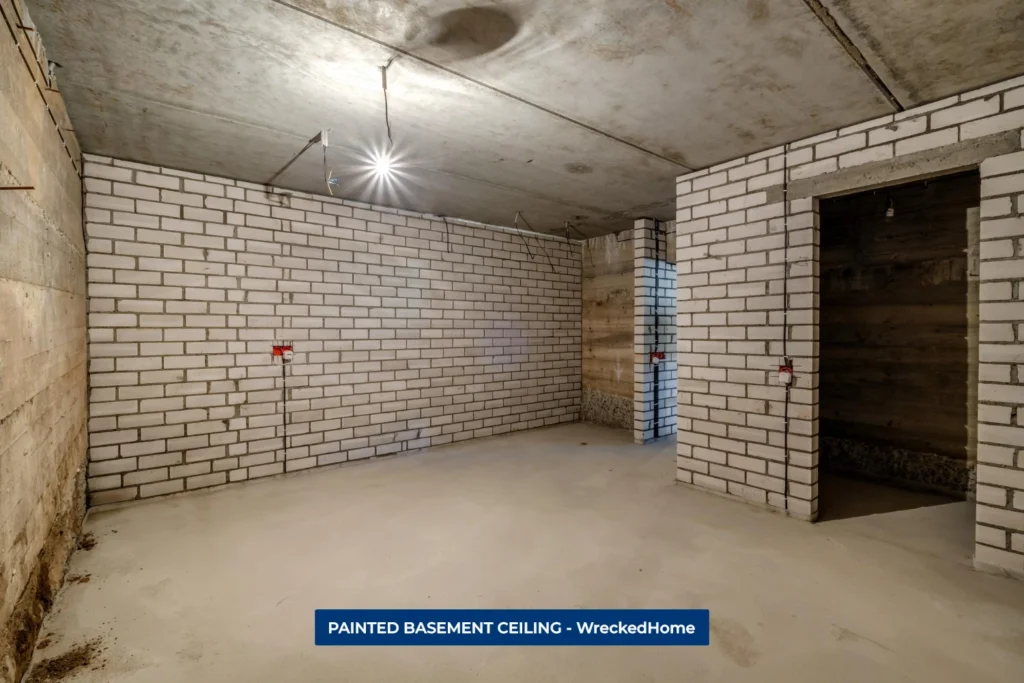
- Accessibility
- Gain Visual Height
- Aesthetics
- Budget-Friendly
- Increased Lighting
- Time-Saving
- Pest Control
There are many benefits of exposed basement ceilings and the most prominent ones are as follows:
Accessibility
If a basement ceiling opens, that means you have higher access to HVAC ducts, wires, modern plumbing, and pipes in your home. The basic achievement through this ceiling is that you can reach places that need to be fixed easily without any interruption. It is helpful while performing maintenance projects or if you are going for home improvement.
Gain Visual Height
With a painted basement ceiling You can add more ceiling height due to the facility of exposed basement ceilings even if you have a dry walled ceiling. Most houses have low ceilings and drywall only lowers ceiling by inches. But in case of a very low ceiling, having an exposed basement ceiling will make the space feel like you have added height.
The floor joist’s vertical lines look like they are tricking the eye into thinking that ceiling is higher. The wall actually doesn’t have that height but it appears like that. If you have low basement ceiling, it is recommended to paint the exposed ceiling instead of using drywall.
Visit our store for 10% off our Save Home Energy products here.
Aesthetics
Exposed ceilings gives an industrial look that is modern and trendy nowadays. Try this look to make your home feel royal and aesthetically pleasing. You should try this look. Painting exposed pipes and duct-work looks better.
Budget-Friendly
Painting a ceiling yourself is less expensive and cost effective option than drywall. Planning a professional painting process is cost effective and you have to pay extra cash. DIYers already have sprayers and only need primer and paint which is not very expensive.
Increased Lighting
Painted basement ceilings that are white show how much light reflects around your room. It seems like a room that is void of natural light becomes brighter and larger. Use white ceiling paint as it reflects other colors on the basement wall. For example, if you paint walls with a deep red color then it appears to be rose colored on ceiling.
Time-Saving
Painting an exposed ceiling takes less time than drywall. The spray gun covers the basement ceiling in just few hours. Wait for few hours and apply next coat. It takes less time to dry and on other hand drywall takes days to dry and it comes with more neck aches and elbow grease.
Pest Control
Pest control is major issue in many houses. Exposed basements help you to control pests. For an unfinished ceiling, typically you will remove insulation and rafters that keep the pests away from your home.
What Is the Best Way to do a Painted Basement Ceiling?
- By Hand
- With a Spray Gun
To paint a ceiling, we came across two common methods. One is to paint by hand and other is to paint by spray gun. The fastest, easiest and most recommended option is to choose spray gun. On other hand, if you want a cost effective way, you can choose the process of painting by hand.
By Hand
Painting by hand is a good option for those who want to save money. However, keep in mind it is a complicated and time consuming process. You will need many people to handle project for painting an exposed ceiling by hand either by roller or brush. Painting a flat ceiling is 10 times shorter process than covering pipes, rafters and ducts. Wood rough surfaces also need extra paint coat and time.
While planning paint on a ceiling, you can take the help of a painters team to cover the ceiling by hand. However, if you are planning to cover the whole room or unfinished surface there is no need to careful with paint.
With a Spray Gun
Spray paint is good option for house ceilings with many pipes, crannies, wires, and nooks. Spray paint with spray gun gives smooth and even finish therefore, it is recommended for the house with more pipes and wires.
How to Paint an Unfinished Painted Basement Ceiling
Before starting any procedure, it is important to collect necessary materials and make decisions on how to paint an unfinished basement ceiling. You have two options in this regard. One is to paint by hand and another is to make use of a sprayer. If someone uses a spray gun, it is probably a single person’s work and many people have to contribute to painting an exposed ceiling, if you choose the second option. You have to follow some steps to paint an unfinished ceiling.
Is Priming Necessary For a Basement Ceiling Before Painting?
Priming a basement ceiling is a basic need before you paint. It’s importance is because of its ability to allow paint to stick to various surfaces better. Durability is important and not only depends upon the paint company but also for the primer as it makes the paint durable by sticking it to various surfaces. It is ideal in paint exposed wood rafters, wires, pipes and duct-work. Primer makes the process of painting a black ceiling white easy for you. It allows you to reach light paint colors more easily.
Inspect and Secure Venting and Pipes
Check out pipes and vents before applying paint to a ceiling. Inspection and security of pipes and vents is important to make sure that they require no maintenance. Pipes and vents become loose due to house shifts over time and they need replacements and maintenance. Readjust and refasten them before starting the procedure of painting a ceiling. You can take pipes, wire, and venting hangers and attach them to wood beams to provide more security.
Remove Insulation Ceiling
The second step is to remove the insulation from the basement ceiling. You can skip this step in unfinished basements. Fill gaps with spray insulation; if there is a need then trim it down using razor blade when it dries to smooth surface. You need several coats for ideal coverage.
Bundle & Secure Wiring
Some basements have wiring which you see in different directions. You have to secure these wires before you start your painting procedure. So, collect chords and cables and secure them together against rafter with zip ties or wire staples. When we organize them they give more subtle look and cleaner paint job.
Trim Ceiling Nails
Unfinished ceilings or exposed basement ceilings have long nails sticking down from the floor. You cannot trim these long nails with rotatory tools like a Dremmel. Flush these nails off ceiling with the help of painting process. This is one of the most prominent and safe options to get rid of sharp objects near your head.
Fill Gaps By Using Foam Insulation
The next step is to fill gaps and cracks with foam insulation. It creates a smooth surface and gives better results in paint job. It prevents small animals and other things from getting into small hidden places near ceiling or basement window wells. Most probably, it is for preventing theft, vandalism, and pest infestation.
Clean Your Ceiling
The next step for a good painted basement ceiling is to clean ceiling. You can use broom, shop vac, or scrub brush to clean ceiling. It is important to clean ceiling of dirt debris and other particles before we start process of painting. Otherwise, it doesn’t stick to surface wall. To deal with an extremely dirty basement, use an air compressor with blow sprayer attachment to remove the dust. Most of the time it can create mess but it is good way to clean cinder block walls.
Tape Off Your Places Where You Don’t Want to Paint
It is important to tape off necessary areas because paint gets everywhere when you paint a ceiling. So, it is necessary to use painter’s tape to avoid the areas you want to secure. Most probably only includes windows, doorways and light fixtures. Save the electrical box, furnace shut off knobs and others that need to be off.
Protect Floors, Surrounding, and Yourself
Protection of floor and yourself is crucial for a painting basement ceiling. Cover everything that you won’t remove from room. It may be walls, floors and light fixtures. If you don’t want to turn off the electricity then wrap it in plastic bag to avoid getting paint on them.
Spraying paint never needs to wrap lights and replace them after completing the project. Cover the furnace to protect it from paint. In case of spray gun, you have to wear safety goggles with side coverage to keep the material away from the eyes. Cover your shoes and clothes with paint suit and latex gloves and cover over your hair.
Lungs are the most important part to save before applying paint. Paint causes irritation to lungs. It also irritates your throat, nose and eyes.
Taking in fumes too long causes dizziness, headache and nausea. Don’t over spray to avoid any type of loss. Latex is paint type that is easy to clean with soap and water. You can fix it later, if you miss something.
Apply Primer
When you plan to paint, apply primer to pipes, rafters, ducts, ductwork and wires. You have to leave black wires alone if you are painting ceiling black. Silver metal pipes are an exception on ceiling. Primer helps the paint stick to the surface properly. Make sure to match your paint and surface. This makes for a seamless painted basement ceiling.
When you are using white ceiling paint, seal wood with strong primer to avoid yellowing over time. Choose shellac based primer to seal wood tannins. Otherwise you will have to face yellowing of paint color. If you want black ceiling, choose a Grey tinted primer. This specific color provides coverage.
Spray primer on ceiling and cover pipes and duct-work. The process to move the spray gun is quick and even. Move the spray gun at any speed but move your entire arm except your wrist for proper spraying. Do not stay too long at one place for too long as it causes drips. Let the first coat of the primer dry and then apply the next coat. It is important to dry the primer before painting. Clean brush, rollers and spray gun with ammonia after applying primer.
Spray Basement Ceiling
The last step for a painted basement ceiling is to paint the exposed basement ceiling. When you apply primer it will allow you to use less paint on rafters and beams. But most of exposed ceiling takes around three coats of paint for full coverage and perfect result.
For proper coverage, use a step ladder to reach all edges. With a spray gun, spray the paint on the ceiling with same process as the primer. If you want to cover the area by hand choose a paint brush or roller. However, this is a time consuming process. Remember to dry each coat before adding another. Cover the whole area and make sure you don’t miss any spots or smooth any drip.
Conclusion – Painted Basement Ceiling
The painted basement ceiling is good but the painted exposed basement ceiling is more satisfying. The process is same as painting the ceiling of basement. But keep in mind, that the exposed one needs more work due to exposed fixtures which you have to cover before painting. You can choose any as both give a new look to your basement.
For any repairs, installations, builds, or questions; We recommend you to hire a professional. Find A Pro Near You Here!

